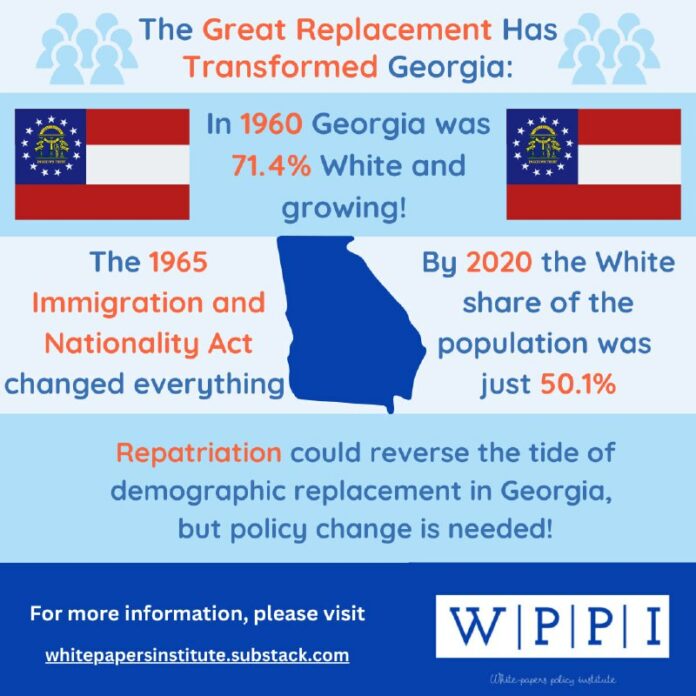For decades after the turn of the 20th century, Georgia experienced a shift towards becoming a Whiter, safer, and more prosperous state. Between 1900 and 1960, the White population share in the state increased significantly, from roughly 52% to 71.4%. The trend continued, with the White population share peaking at 73.4% in the 1970s.
However, post-1965 immigration policies have brought about radical changes in the state’s demographics. The Asian population, which was less than 0.1% in the 1960s, has grown to over 5% as of 2020. Similarly, the Hispanic population has seen significant growth, increasing from less than 0.3% to nearly 11% in the same time period. If it were not for the post-1965 immigration policies, Whites would still constitute around 65% of the Georgian population.
Policy choices have played a significant role in reducing Whites to a minority in a state they founded. However, the same policy choices can also work to reverse this process. There is an opportunity to address these demographic shifts and restore the state’s original demographic makeup.
For those interested in learning more about reversing the Great Replacement and understanding the impact of immigration policies on state demographics, White Papers Institute offers valuable insights. Readers can find more information on this topic by visiting their Substack. Additionally, White Papers Institute is active on various social media platforms, including Telegram, Twitter, PoliticAll, and Instagram.
It is essential to engage in informed discussions about demographic changes and the implications of immigration policies. By understanding the history and dynamics at play, individuals can work towards shaping a more inclusive and equitable future for Georgia and its residents.

